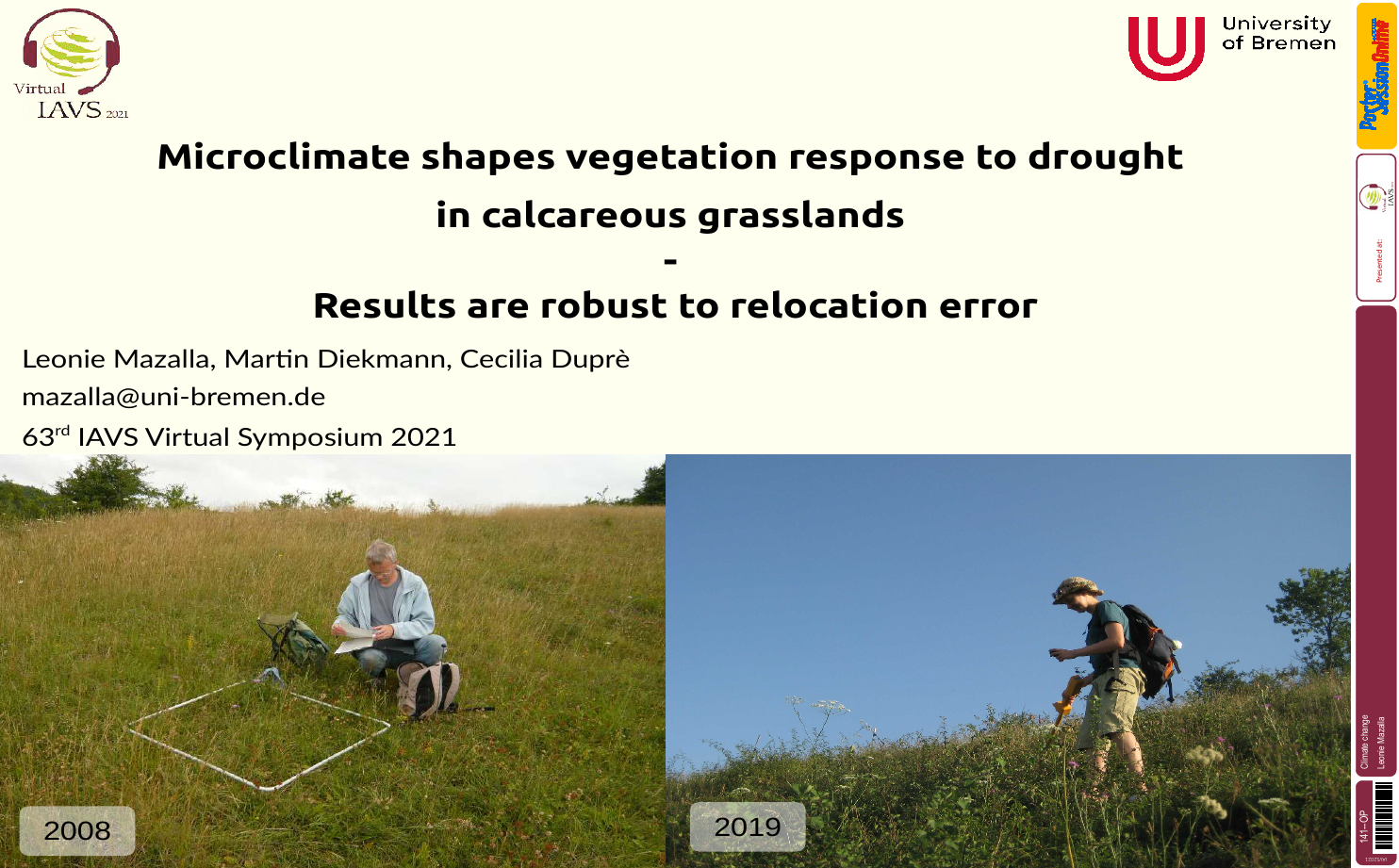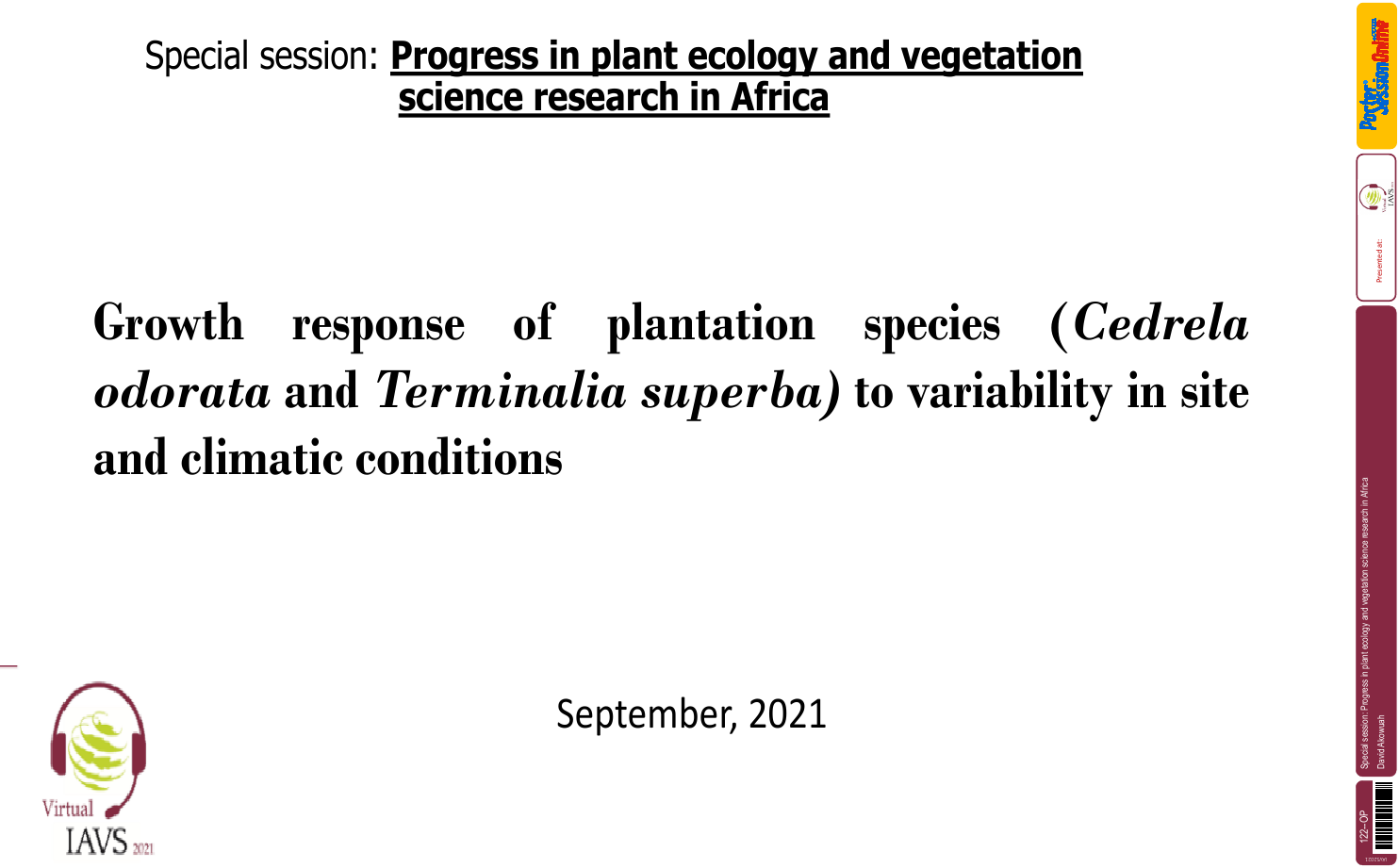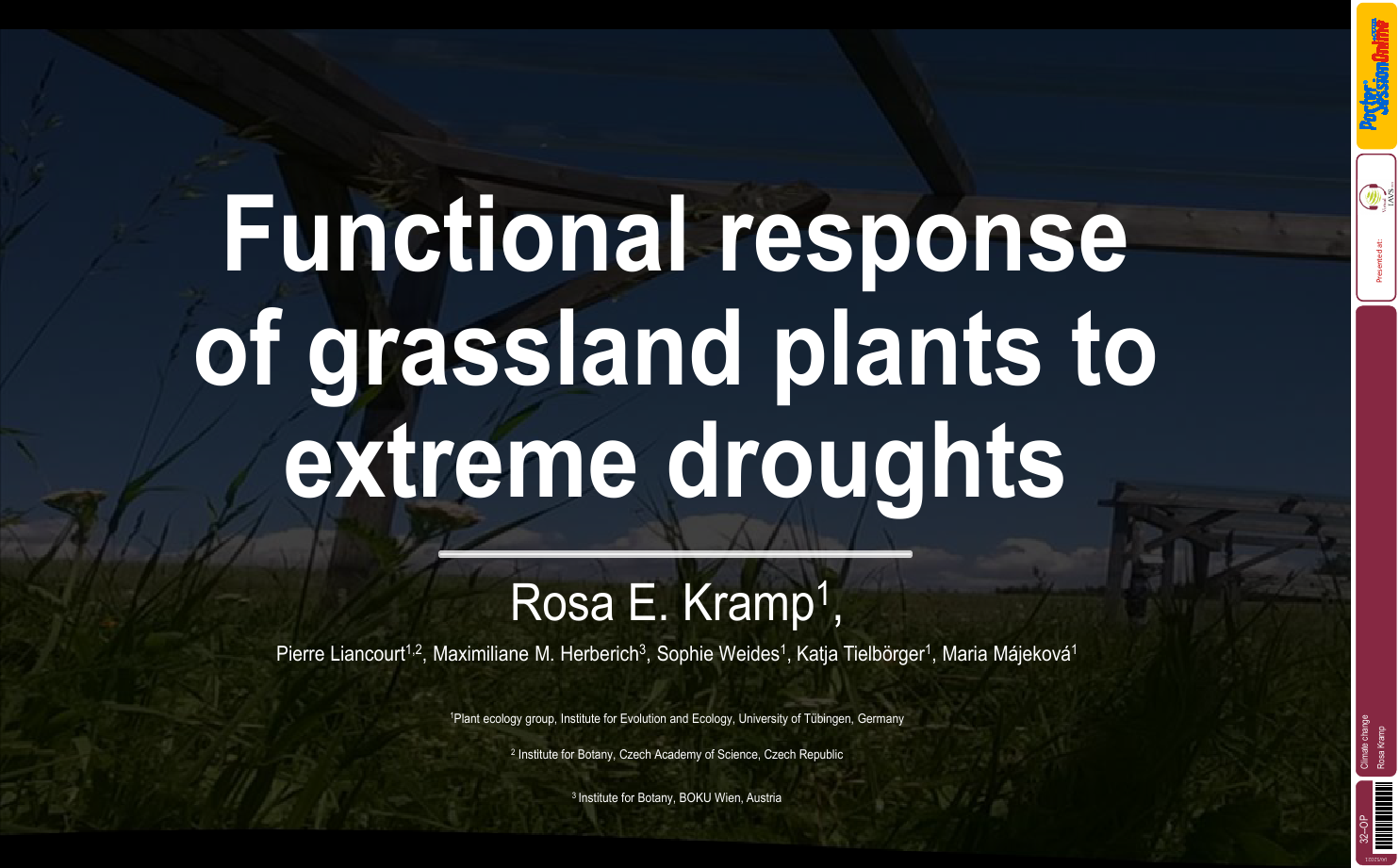| |
 |
|
 | | |
Discussion forum - 63rd IAVS Symposium
 Topic - Climate change Topic - Climate change
If you are already registered in PosterSessionOnline, enter your e-mail and click on LOGIN. Otherwise click on REGISTER. |
 |
|
 |  | |
 |
 |
 |

|
Poster: 141
Visits: 98
Title: Microclimate shapes vegetation response to drought in calcareous grasslands - results are robust to relocation error
Authors: Leonie Mazalla , Martin DiekmannCecilia Duprč
Centre:
|
|
You must be registered to reply or comment.
|
|
MICROCLIMATE SHAPES VEGETATION RESPONSE TO DROUGHT IN CALCAREOUS GRASSLANDS - RESULTS ARE ROBUST TO RELOCATION ERROR
|
 |  | Leonie Mazalla |
Thread initiator
Subspeciality
Reg: 9/3/2021 6:22:00 PM
|
 |
Comment# 1
|
I invite colleagues to open debate around the issues raised in my presentation, both those relating to research and to practice.
Comment added on 9/14/2021 10:25:00 AM
|
|
|
 |
| |
 |
|
 |  | Irena Axmanová |
Subspeciality
Reg: 9/4/2021 7:50:00 PM
|
 |
Comment# 2
|
Nice talk, Leonie! I really like the study. I was wondering if the drought events support also spread and establishment of alien or ruderal species in your plots? As you said, drought can lead to a decreased cover of some species or even their disappearance, and such gaps in the stands can be colonised by short-lived species with effective dispersal, e.g. Erigeron canadensis etc. Did you observe such trend?
My best regards to Martin and Cecilia!
Comment added on 9/22/2021 12:14:00 PM
|
|
|
 |
| |
 |
|
 |  | Leonie Mazalla |
Thread initiator
Subspeciality
Reg: 9/3/2021 6:22:00 PM
|
 |
 |
|
Irena Axmanová wrote on 22/09/2021 12:14:00
Nice talk, Leonie! I really like the study. I was wondering if the drought events support also spread and establishment of alien or ruderal species in your plots? As you said, drought can lead to a decreased cover of some species or even their disappearance, and such gaps in the stands can be colonised by short-lived species with effective dispersal, e.g. Erigeron canadensis etc. Did you observe such trend?
My best regards to Martin and Cecilia!
|
 |
 |
|
Comment# 3
|
Hi Irena,
we did indeed see a signifcant trend of increasing ruderal plants, but still on a very low level. The average number of ruderal species per 1 m2 plot was still below 1, and the share of cover was only about 2%, also after the significant increase. In a paper by Felícia Fischer ("Weather fluctuations drive short-term dynamics and long-term stability in plant communities: a 25-year study in a Central European dry grassland"), she also calls this "grassland ruderalization after a drought event". I think that is a pretty common phenomenon.
Concerning alien species, they did not play a role at all. My quick guess here is that the successful and abundant invasive species are mostly nutrient demanding, quick growing species (I'm thinking about species like Goldenrod or Impatiens glandulifera). In "our" habitat, the main strategy is to be stress tolerant, however. This might speak against a fast ability to colonise. But Erigeron canadensis is a good counter-example. We did not find it in our sites, however!
Best Greetings to Czechia and I will say Hello to Martin and Cecilia :)
Comment added on 9/22/2021 2:50:00 PM
Quoting Irena Axmanová
|
|
|
 |
| |
 |
|
|
 |
 |
 |
| You must be registered to reply or comment. |
|
 |
 |
 |
 |
 |
| Most viewed poster for this congress |
 |

|
Poster: 122
Visits: 528
Title: Growth response of plantation species (Cedrela odorata and Terminalia superba) to variability in site and climatic conditions
Authors: David Akowuah , Reginald T. GuurohMark Appiah2
Centre:
|
|
 |
 |
 |
 |
 |
| Poster most viewed in this topic |
 |

|
Poster: 32
Visits: 159
Title: Functional response of grassland plants to extreme drought
Authors: Rosa Kramp , Pierre Liancourt, Maximiliane M. Herberich, Sophie Weides, Katja Tielbrger, Maria Májeková
Centre:
|
|
|
|